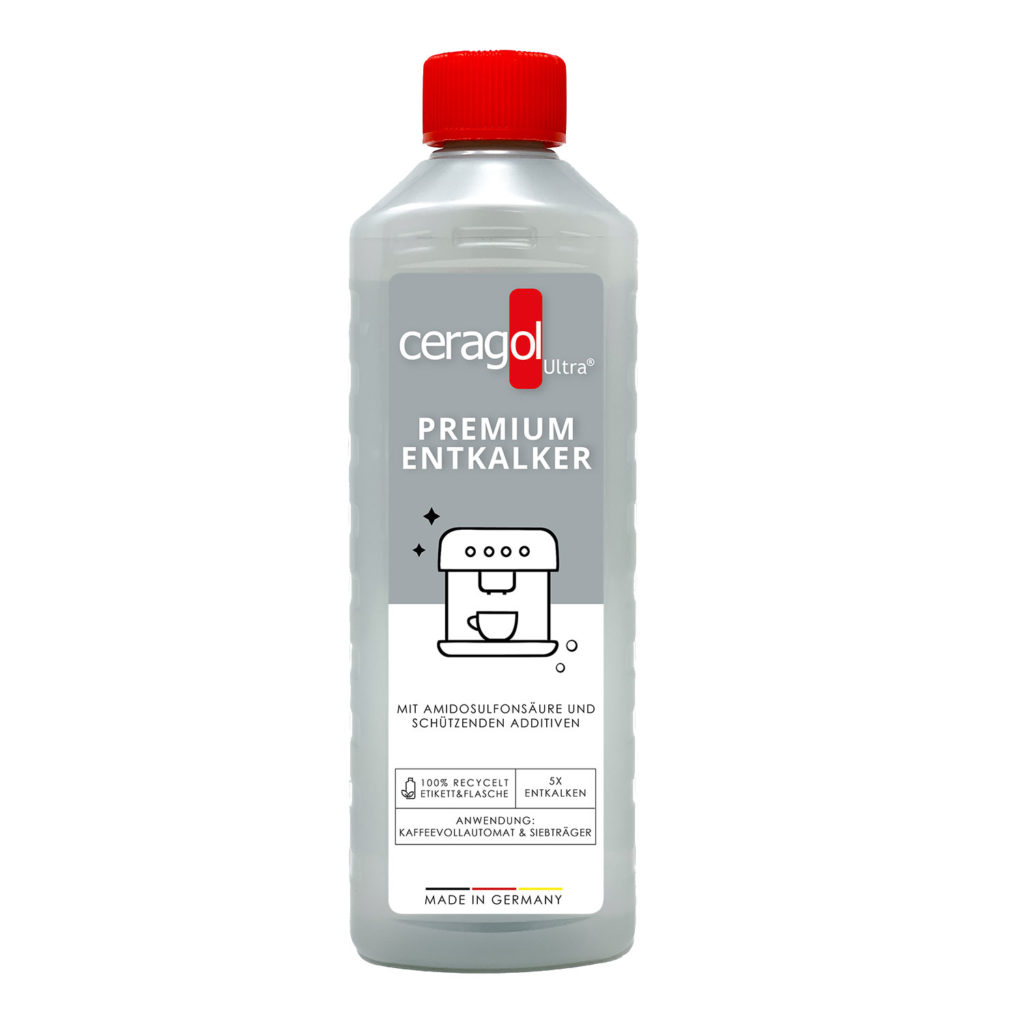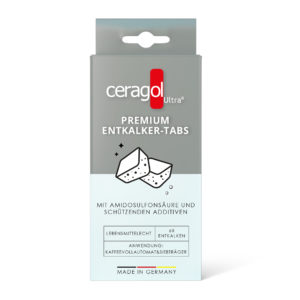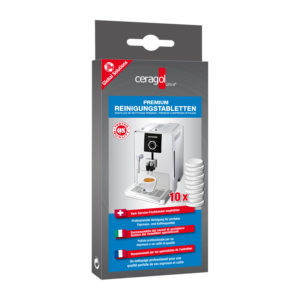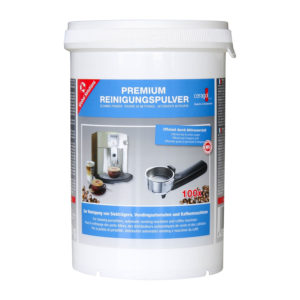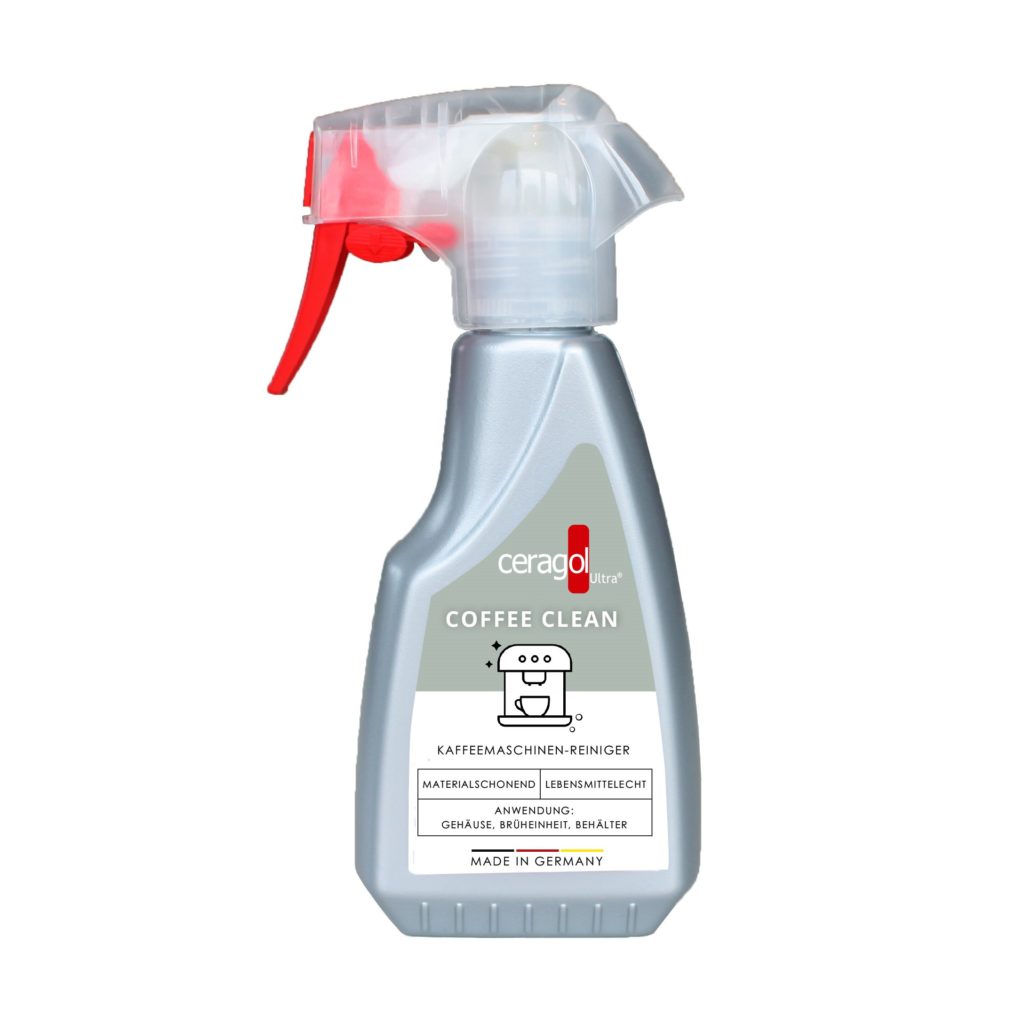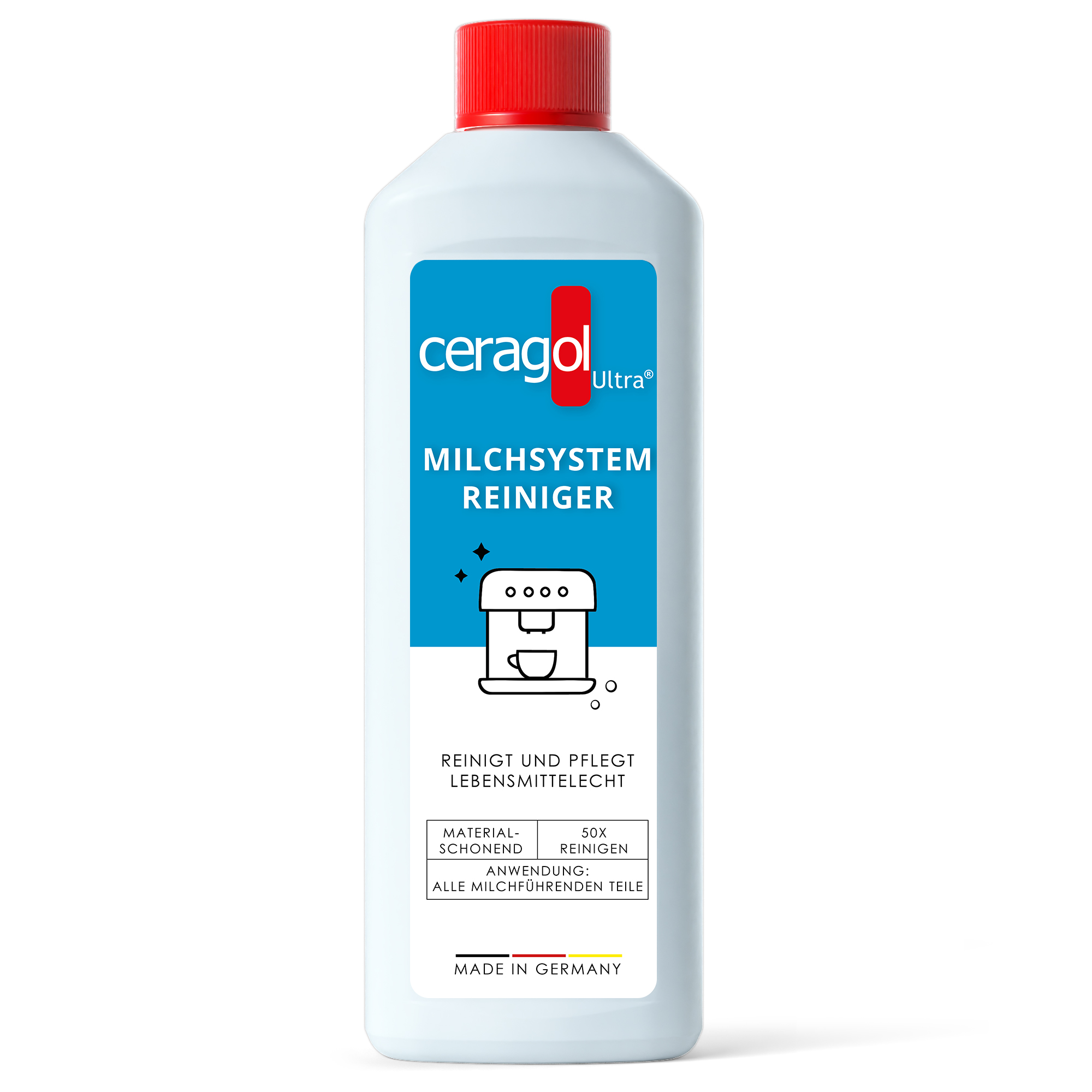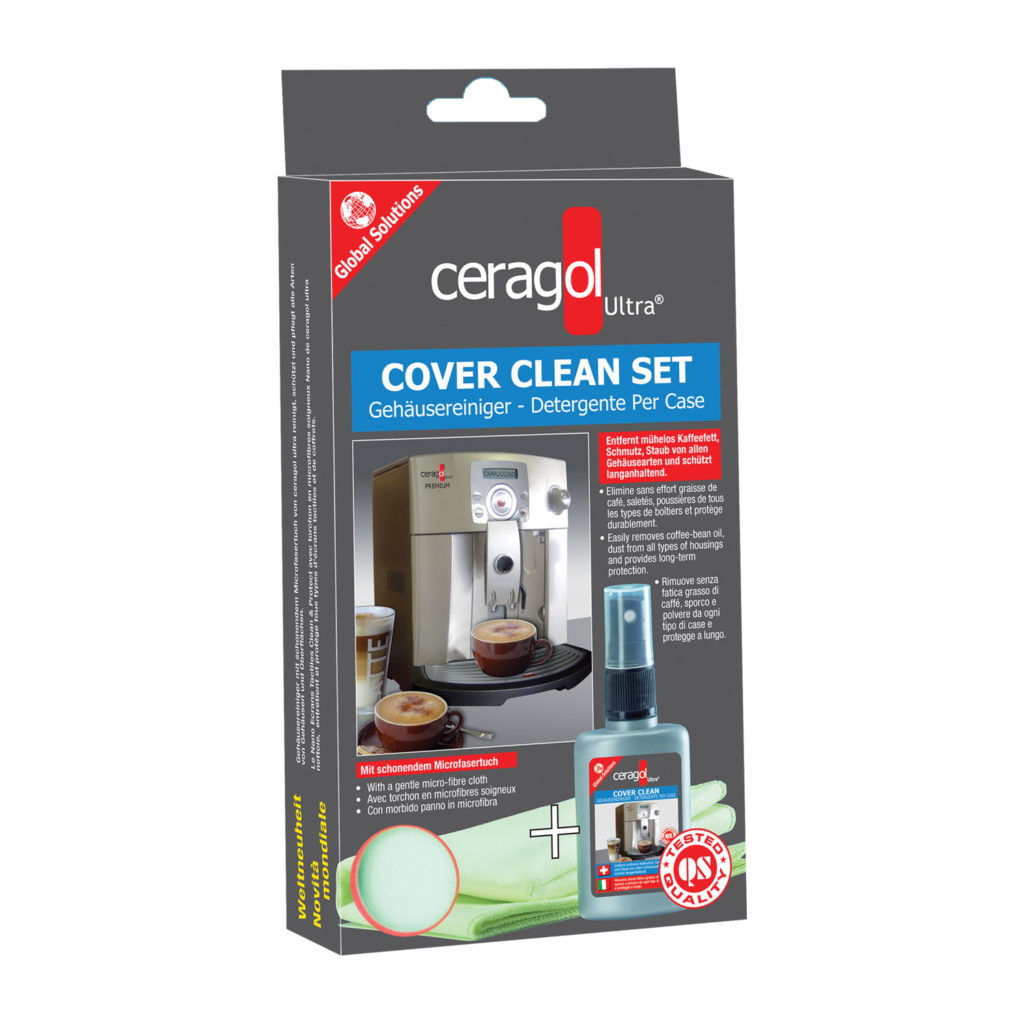Cleaning a portafilter
As professional devices used in gastronomy, it works with a removable portafilter, which is filled with ground coffee and securely fixed in the machine by means of a bayonet catch. A separate coffee mill is required (there are combined machines with a mill in the same housing), as freshly ground coffee is essential when preparing top-quality espresso, and every machine has its own specific grinding degree.
Please move the mouse over the coffee machine and select an area:
Descaling
The number of descaling processes depends on the intensity of use of your espresso machine and the level of water hardness. It must be descaled regularly, even if softened water is used. Sour or cold coffee are just as clear signs of a calcified machine as are unusual noises such as a loud pump.
You should descale once a month if you have a high level of water hardness (above 15°dh). Once every three months is sufficient for a normal level of water hardness (approx. 2-6°dh). Only the regular descaling of your top-quality device ensures a long service life and the best possible coffee enjoyment.
Single and dual circuit machines
- Switch the machine off in operational state and allow the boiler water to drain off into a suitable container via the hot water outlet.
- Fill the water tank with fresh water. Fill Premium descaler (approx. 100ml) into the water tank. Even suitable for aluminium water heaters or boilers, as additives protect the materials.
- Allow the descaler solution to run through the brewing unit until it starts to escape, then stop the process again.
- Allow the solution to take effect for approx. 5 – 10 minutes.
- Repeat step 2 – 3 if you have a high level of water hardness.
- Switch the machine off and allow the boiler water to drain off via the hot water outlet.
- Empty the water tank, rinse and fill with fresh water. Switch the espresso machine back on again and remove the remaining descaler solution via the hot water outlet.
- Wipe the machine with a damp cloth to remove any possible descaler solution residues. Depending on the surface, longer contact may result in unsightly marks.
- Fill the water tank with fresh water. Switch on, wait until the machine is ready and enjoy.
Brewing unit
- Free the brewing unit of coffee residues with a suitable brush.
- Heat the device up and bring it to operating temperature.
- Insert the blind filter into the portafilter.
- Place a Premium cleaning tablet or Premium cleaning powder into the blind filter and insert the portafilter into the unit.
- Operate the coffee lever/coffee button such that the blind filter is filled with water. In the case of machines with a pressure indicator, wait until the pressure at the blind filter reaches approx. 8-9 bar.
- Allow the water with the grease solvent to take effect in the brewing unit for 20-30 seconds.
- Operate the coffee lever/coffee button such that the coffee greases and coffee oils can escape from the cylinder.
- Repeat points 5 and 6 several times until clear water comes out of the cylinder again.
- Remove the portafilter and rinse thoroughly under running water.
- Repeat the rinsing process (steps 5 – 8) several times without the grease solvent.
- If possible, unscrew the portafilter and clean it.
- Finally, dissolve a Premium cleaning tablet or Premium cleaning powder in warm water and immerse the portafilter and strainers in the solution over night (the plastic handle should remain untouched if possible) and then wipe off with a damp cloth the next morning. Then everything will look like new again.
In the case of intensive use it is recommended to occasionally clean the portafilter. Simply remove, spray with Coffee Clean, allow to take effect for a moment and then rinse thoroughly. Ready.
Milk frother
Today there more and more different coffee specialities, many of which require milk froth. Almost all portafilters have a steam lance for the production of milk froth, which brings the milk into the right froth form using the right technique. Afterwards, however, it should be thoroughly cleaned. Milk residues are the perfect breeding grounds for bacteria. In order to optimally remove these fat and protein deposits without leaving any residues, we recommend using Milksystemcleaner.
- Unscrew the tip of the frothing nozzle
- Mix 20-50ml of Milksystemcleaner with water
- Froth the mixture as you would milk
Drip tray
Water, coffee and coffee grounds collect in the drip tray. This mixture proves to be quite stubborn when cleaning. Clear water is not sufficient here. Coffee Clean helps to dissolve these greases. In future, cleaning is much easier.
- Remove the drip tray and empty it, then rinse briefly.
- Spray on Coffee Clean extensively and allow to take effect for a few minutes
- Then rinse with plenty of water and enjoy
Housing
The housing not only becomes soiled by dirt and dust in everyday use; coffee grease also gradually settles and can only be removed with great effort. New top-grade machines have touch screens, chrome-plated fittings and stainless steel applications. These parts are particularly susceptible to finger marks, which can spoil the elegant impression.
Our solution for all of these problems is Cover Clean, as it not only gets rid of contamination, but also easily dissolves the coffee grease. Finger marks are removed and the cleaned surfaces subsequently have a lotus effect, which considerably and efficiently reduces new finger marks. And the coffee grease mentioned above is no problem, as Cover Clean can handle it all, needs no added alcohol and is absolutely odourless.

